
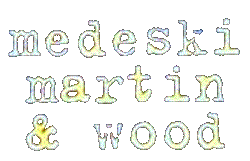



 |
 |
 |
 |
 |
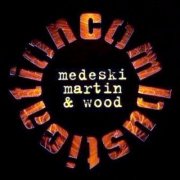 |
Combustication (1998, 68.37) ***½/T½ |
|
| Sugarcraft Just Like I Pictured it Start/Stop Nocturne Hey-Hee-Hi-Ho Whatever Happened to Gus Latin Shuffle Everyday People |
Coconut Boogaloo Church of Logic No Ke Ano Ahiahi Hypnotized |
|
 |
The Dropper (2000, 51.13) ***½/TTT |
|
| We Are Rolling Big Time Felic Partido Alto Illnization Bone Digger Note Bleu The Dropper |
Philly Cheese Blunt Sun Sleigh Tsukemono Shacklyn Knights Norah 6 |
|
 |
Uninvisible (2002, 50.25) ***½/T |
|
| Uninvisible I Wanna Ride You Your Name is Snake Anthony Pappy Check Take Me Nowhere Retirement Song Ten Dollar High Where Have You Been? |
Reprise Nocturnal Transmission Smoke First Time Long Time The Edge of Night Off the Table |
|
 |
End of the World Party (Just in Case) (2004, 53.49) ****/TTT½ |
|
| Anonymous Skulls End of the World Party Reflector Bloody Oil New Planet Mami Gato Shine it Curtis |
Ice Sasa Midnight Poppies/Crooked Birds Queen Bee |
|
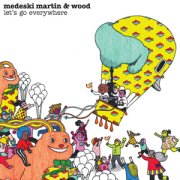 |
Let's Go Everywhere (2008, 39.13) ****/T |
|
| Waking Up Let's Go Everywhere Cat Creeps The Train Song Where's the Music Pat a Cake Pirates Don't Take Baths Far East Sweets |
On an Airplane The Squalb Let's Go Old Paint Hickory Dickory Dock All Around the Kitchen We're All Connected |
|
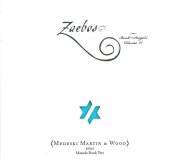 |
Zaebos (Book of Angels Volume 11) [composed by John Zorn] (2008, 54.25) ***/T |
|
| Zagzagel Sefrial Agmatia Rifion Chafriel Ahaij Asaliah |
Vianuel Jeduthun Malach Ha-Sopher Tutrusa'I |
|
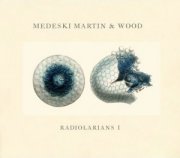 |
Radiolarians I (2008, 64.25) ***½/T½ |
|
| First Light Cloud Wars Muchas Gracias Professor Nohair Reliquary Free Go Lily Rolling Son |
Sweet Pea Dreams God Fire Hidden Moon |
|
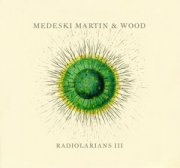 |
Radiolarians II (2009, 51.15) ***½/TT |
|
| Flat Tires Junkyard Padrecito Ijiji Riffin' Ed Amber Gris Chasen vs Suribachi |
Dollar Pants Amish Pinxtos Baby, Let Me Follow You Down |
|
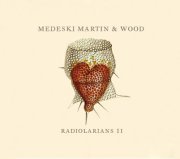 |
Radiolarians III (2009, 59.22) ***½/T |
|
| Chantes des Femmes Satan Your Kingdom Must Come Down Kota Undone Wonton Walk Back Jean's Scene |
Broken Mirror Gwyra Mi |
|
Current availability:
Mellotrons used:
Funnily enough, Medeski Martin & Wood are a trio, specialising in weird, Hammond-driven, jazz-inflected material, influenced as much by hip-hop and funk as traditional jazz. Starting out as an acoustic act, they soon incorporated electric instrumentation into their sound, although John Medeski seems to prefer electro-mechanical keyboards to electronic ones (hurrah!). Combustication is their seventh album, shifting through styles like they were going out of fashion, the more melodic (Sugar Craft, the self-explanatory Latin Shuffle) rubbing shoulders with the experimental (Whatever Happened To Gus, Church Of Logic), with turntablist DJ Logic appearing on three tracks. Definite Mellotron on two tracks, with strings on Just Like I Pictured It and Whatever Happened To Gus, particularly raucously on the latter, although I think the flutes on Nocturne are synth.
The Dropper is their ninth album and the second to feature John Medeski's Mellotron work, which is as off-the-wall as just about everything else the band do. Resonant choirs on Partido Alto sound normal in comparison to the discordant strings on Bone Digger, along with (I think) Mellotron saxes, flutes etc. Tsukemono opens with what has to be the world's first attempt to make Mellotron strings sound like seagulls, followed by some seriously radical pitchbend work on flutes and strings, riding over a weird jazz trio backing. All in all, weird shit indeed. 2002's Uninvisible is probably slightly less weird, though there's not much in it; I'm actually at a bit of a loss to know how to describe most of this music, although they do 'normal out' occasionally. Far less Mellotron this time round, unless I'm not spotting some less common sounds; it finally kicks in with a string part on Where Have You Been? that sounds more like someone doing something explicit and probably highly illegal with a guitar and some background church organ on Off The Table, but I couldn't spot anything else.
2004's End of the World Party (Just in Case) is, generally speaking, a funkier proposition than its predecessors, featuring fewer moments of balls-out weirdness and, er, more Clavinet. To my ears, it's a more accessible record all round, which could be either good or bad, depending on your point of view. The first few tracks are extremely Mellotron-heavy, mixed strings, cellos, choirs and flutes on Anonymous Skulls and a skronky string part and choppy choirs on the title track. The string stabs on Reflector are Mellotron, with more mixed strings on Bloody Oil and a brief string part and echoed flute melody on New Planet. The strings on Ice feature such a radical pitchbend that I suspect an external device (or is he messing with the flywheel?), while the flutes on Midnight Poppies/Crooked Birds aren't dissimilar to the ones on New Planet.
Their first album of 2008, Let's Go Everywhere, marks new ground for the band by being a children's album, complete with vocals on several tracks. The title track sounds like it's from Sesame Street - it may actually be, as its composer is someone other than a band member - the rest of the sensibly-lengthed album full of clever, funny songs for kids that never talk down to them, often involving children in the recording. The Squalb is probably the best example, although Pirates Don't Take Baths runs it a close second. Medeski restricts his Mellotron use to a single track this time, with pitchbent strings all over Far East Sweets, although it would have worked well on two or three other songs. The trio also collaborated with John Zorn on Zaebos (Book of Angels Volume 11) that year, one of thirty-two in the series. For those not in the know, Zorn is a New York-based avant-garde saxophonist, whose catalogue encompasses perhaps four hundred releases on his own, in a variety of band settings and in collaboration with a slew of other artists, making him quite certainly the most high-profile player in that scene. He composed the album's material, but didn't play on it, although, without knowing, I'd have cheerfully put it down as 'just another MM&W album'. Mellotronically-speaking, Medeski plays a variant on 13th Century mega-hit Dies irae on what sounds like one of the lower-end woodwinds (bassoon? Cor anglais?) on Malach Ha-Sopher.
The band's Radiolarians series are named for a type of amoeba that seems to grow in reverse, forming its skeleton outside its soft body. All three albums are played live before recording, in a process new to the band, though far from 'unique', as I've seen it referred to. Radiolarians I is where we remember that MMW are a jazz band, above all, all concerned playing at the top of their game. Medeski's piano work on Professor Nohair (ho ho) is outstanding, ditto his Hammond on God Fire, while Chris Wood excels on (frequently upright) bass and Billy Martin's drumming rivals the genre's greats. Mellotronically, there's a relatively ordinary string part on Muchas Gracias, with more typical 'all over the keyboard' work on Reliquary; while there are a couple of other 'is it/isn't it?' moments, they seem unlikely.
Radiolarians II is less fiery than its predecessor, although it certainly has its moments. I applaud the band's decision to take a fresh look at their creative process, although I have to say that, for the average listener, the end result is 'merely' another MMW album, its gestation an irrelevance. However, if their new approach keeps the band's creative juices flowing... Several Mellotron tracks, with distant strings on Padrecito, more 'typically MMW' parts on Ijiji and Chasen Vs Suribachi, full of pitchbends and is that their first use of Mellotron choirs on Amber Gris? Definitely cellos, anyway, although the solo cello on Dollar Pants is real. Radiolarians III is possibly the jazziest of the series, although the band incorporate a strong dub element into closer Gwyra Mi. Not much Medeski Mellotron this time round, naught but a few string chords in both Broken Mirror and Gwyra Mi, making this one of their least essential albums on the tape-replay front.
The Belly-Up, Solana Beach, California, 10th April 1999 (124.45) ***/T½ |
|
| [Unknown 1] [Unknown 2] [Unknown 3] [Unknown 4] [Unknown 5] [Unknown 6] [Unknown 7] [Unknown 8] [Unknown 9] |
[Unknown 10] [Unknown 11] [Unknown 12] [Unknown 13] [Unknown 14] [Unknown 15] [Unknown 16] [Unknown 17] |
Mellotron used:
I've no idea how many MMW boots are out there; I've tracked down a couple, on one of which, a set in Europe with John Scofield from 1998, Medeski clearly had no access to a Mellotron. A set from California's Solana Beach the following year kicks off with five tracks of atonal piano jazz, of the kind most of us either love or... don't. Things pick up after that, as Medeski switches to (mostly) organ, although, ripping encore aside, this really is 'Jazz Club' stuff, for aficionados only, frankly. Titles? Sorry, not a clue; assuming they're not all untitled improvs, if anyone out there knows, maybe you could e-mail me?
I don't know whose Mellotron Medeski uses (I find it unlikely he hauled his all the way from the opposite coast, but who knows?), but he doesn't play it that much, anyway, while much of what he does do is based around his radical pitchbending technique, apparently involving manipulation of the flywheel. Now, I've tried this and only managed to abrade some skin from my hand. How does he do it? Anyway, we get a few seconds of flutes at the beginning of track six, then a more obvious, heavily pitchbent part on seven, plus some exceedingly skronky string and choir parts later on, brief string parts on eight, nine and the encore. While MMW fans will probably lap this up, the rest of us may wish to approach with a little more caution. Not really worth it for the Mellotron use, either.
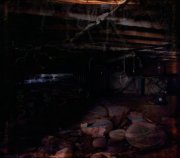 |
Crawlspace: An Electro-Acoustic Fantasy (2021, 41.08) ***½/TTMovement IMovement II |
Current availability:
Mellotron used:
Medeski Martin & Wood having long bitten the dust as a working outfit, John Medeski has recorded a plethora of albums with multiple collaborators, not least DRKWAV, Jack Bruce and the Mellotron Variations project, not to mention his ongoing work with Club d'Elf. 2021's Crawlspace: An Electro-Acoustic Fantasy seems to be only his second fully solo work, following 2013's A Different Time. It consists of an experimental, instrumental keyboard piece split into two parts, combining relatively tuneful sections, including piano meanderings, with full-on synth noise, the whole being remarkably difficult to describe accurately. "But is it any good?", I hear you cry. The short answer is 'yes', while the longer one is 'yes, as long as you have a reasonable tolerance for experimental analogue synth work'.
Medeski's credited with Mellotron M400, alongside such desirable kit as a MiniMoog, Moog Taurus pedals, a Hammond A-100 and a Yamaha CS-60. The Mellotron gets a reasonable workout, with a cello line around fourteen minutes into Movement I and 8-voice choir chords towards the end of the side, and strings a few minutes into Movement II, although I suspect the odd, solo voice in Movement I is a manipulated sample from the credited M4000D digital machine.
See: Herb Alpert's Tijuana Brass | Auktyon | Jack Bruce | Chocolate Genius | Club d'Elf | DJ Logic | DRKWAV | Steve Earle | Scotty Hard with John Medeski & Matthew Shipp | Charlie Hunter & Bobby Previte as Groundtruther | Jack Kerouac | Mellotron Variations | The Legendary Marvin Pontiac | Marc Ribot y los Cubanos Postizos | Saudade | John Scofield | Spectrum Road | Jim Weider | G. Calvin Weston | The Word